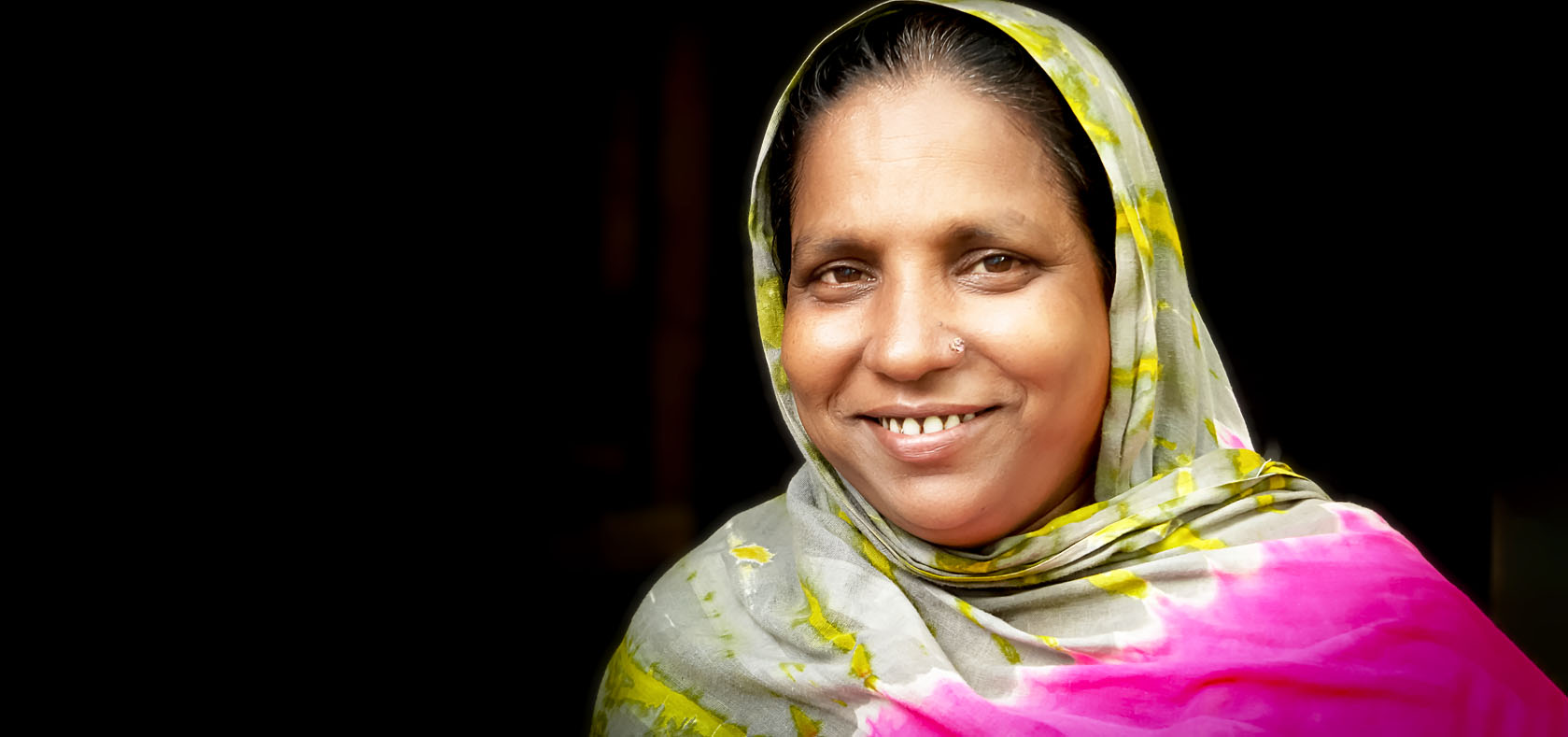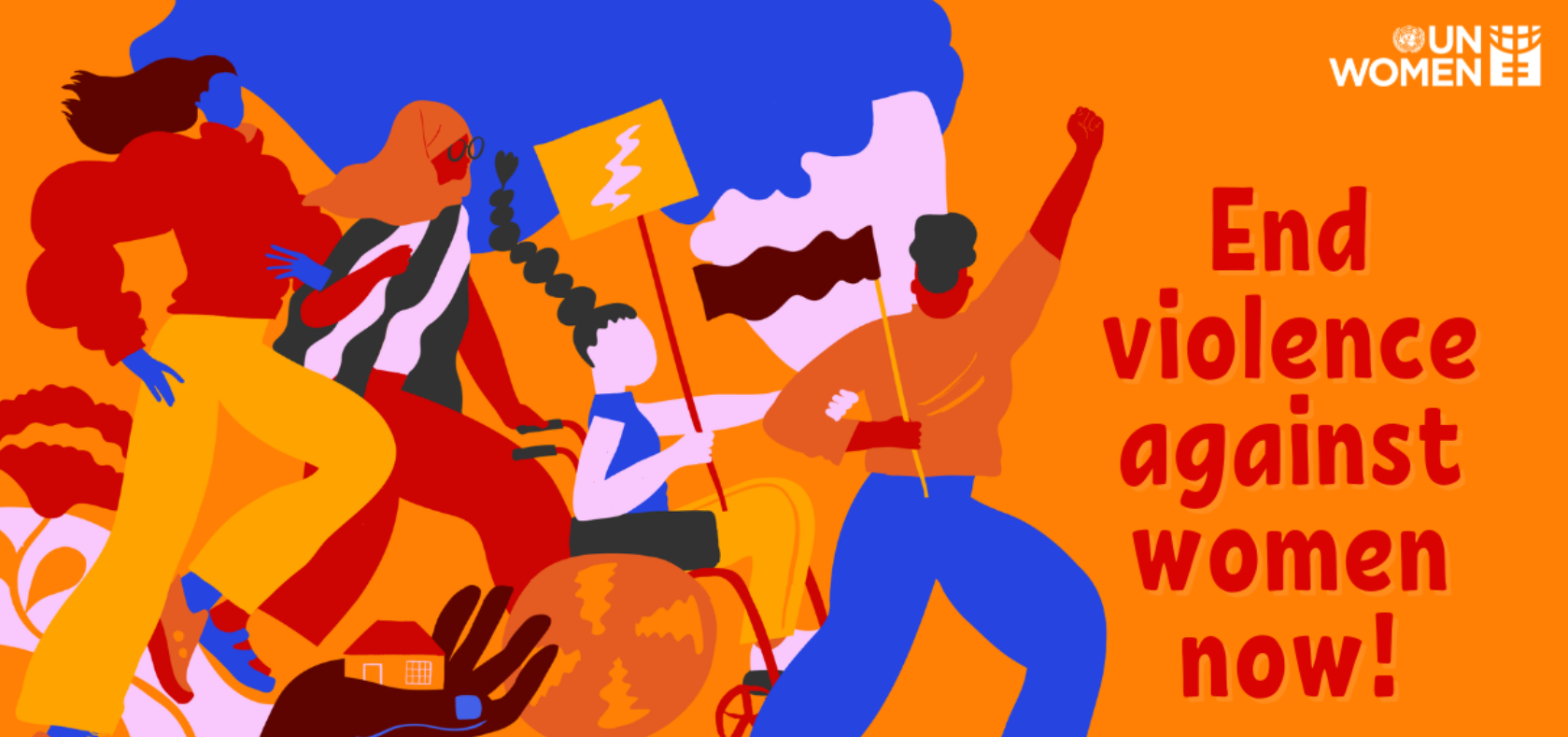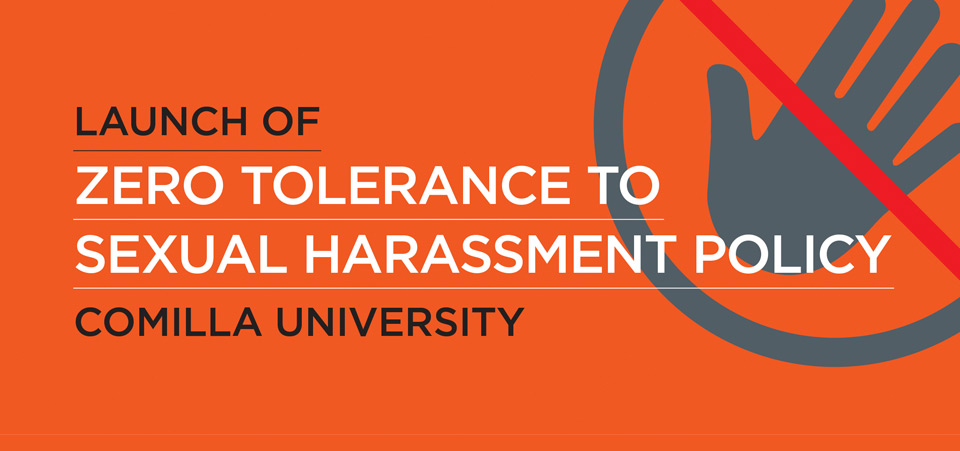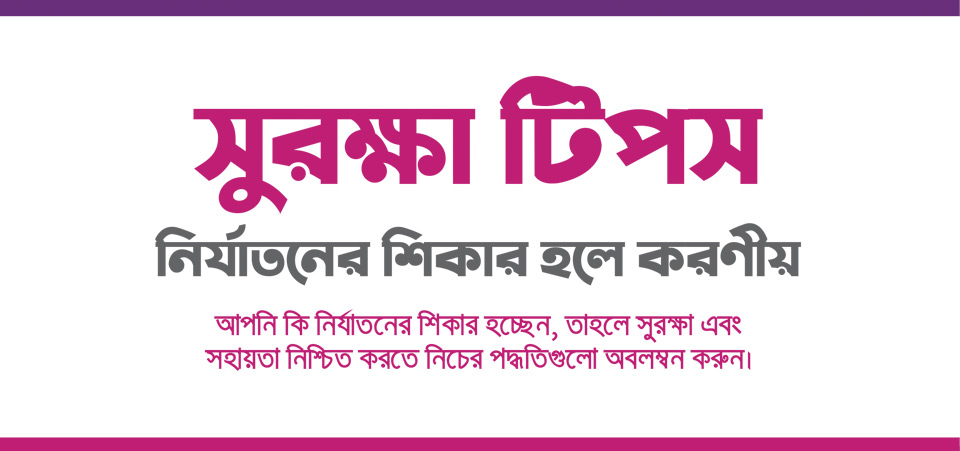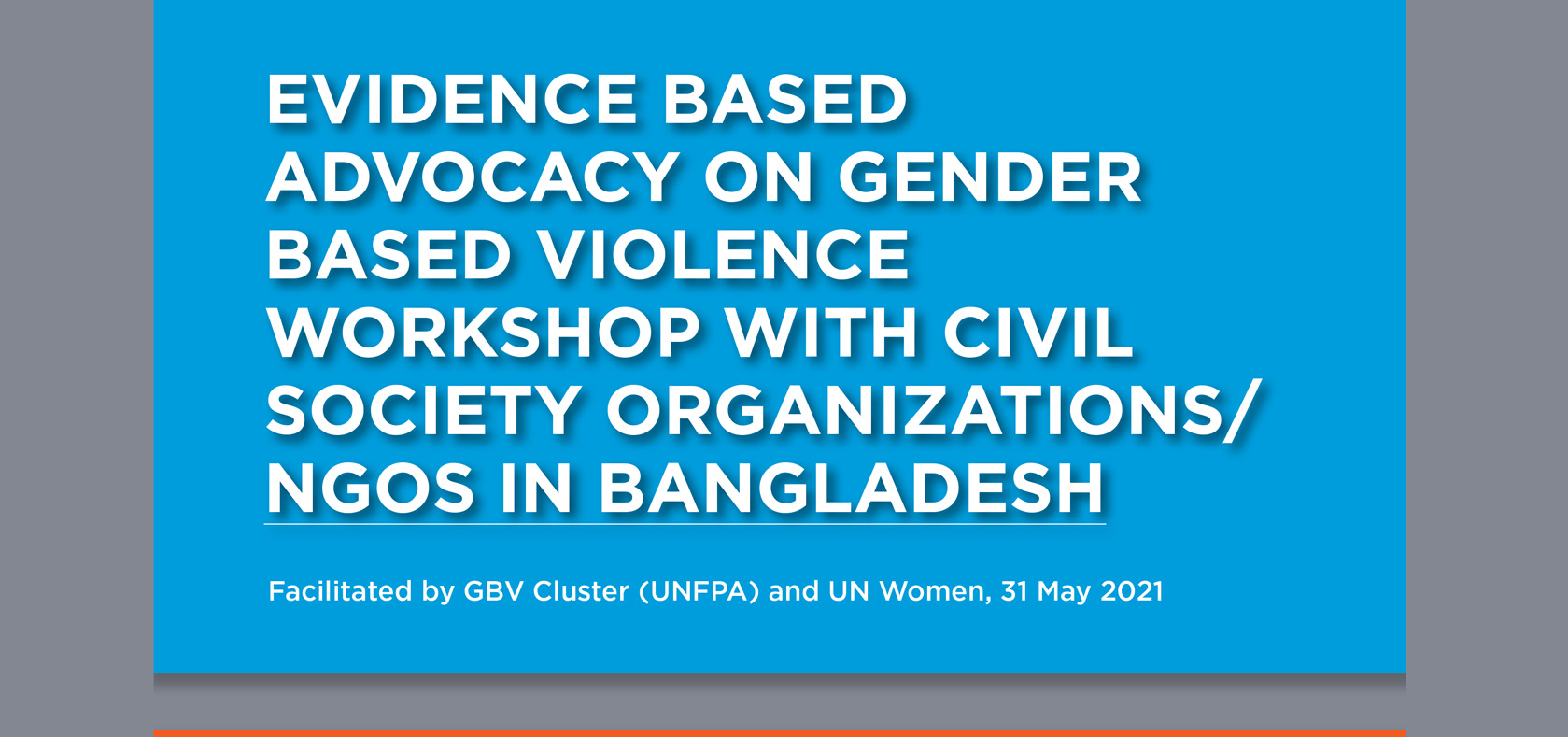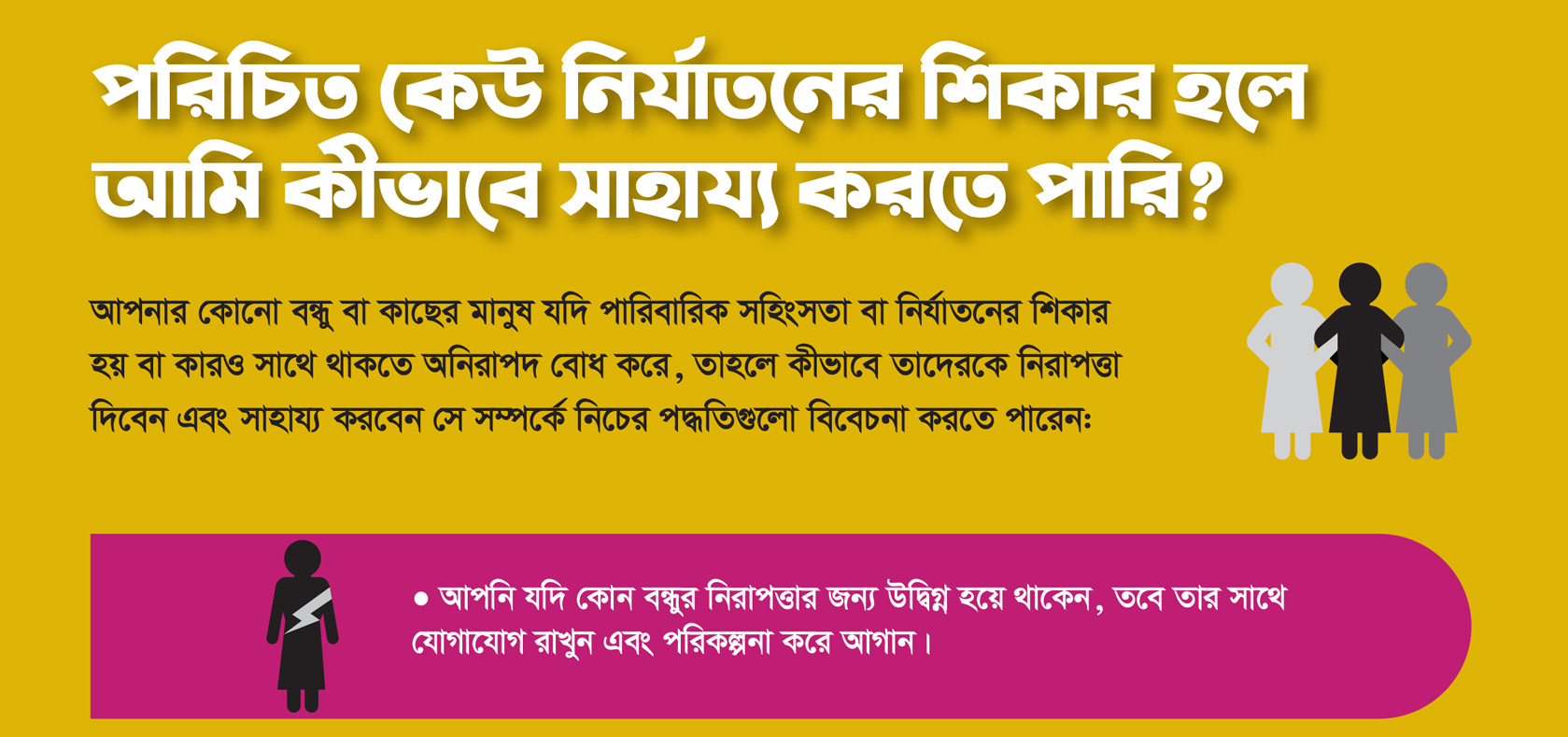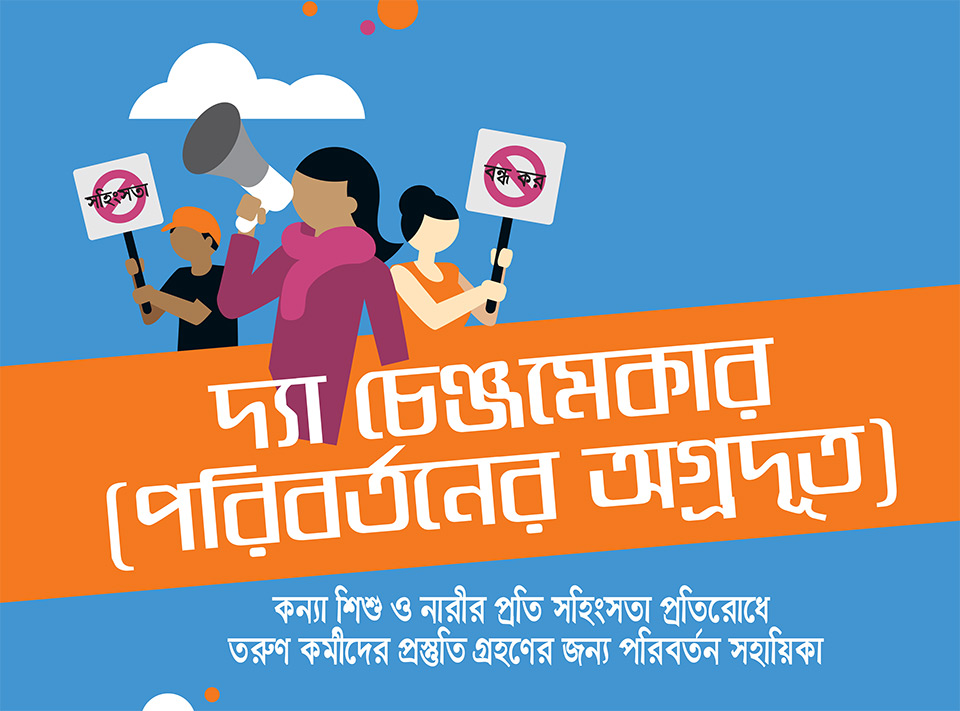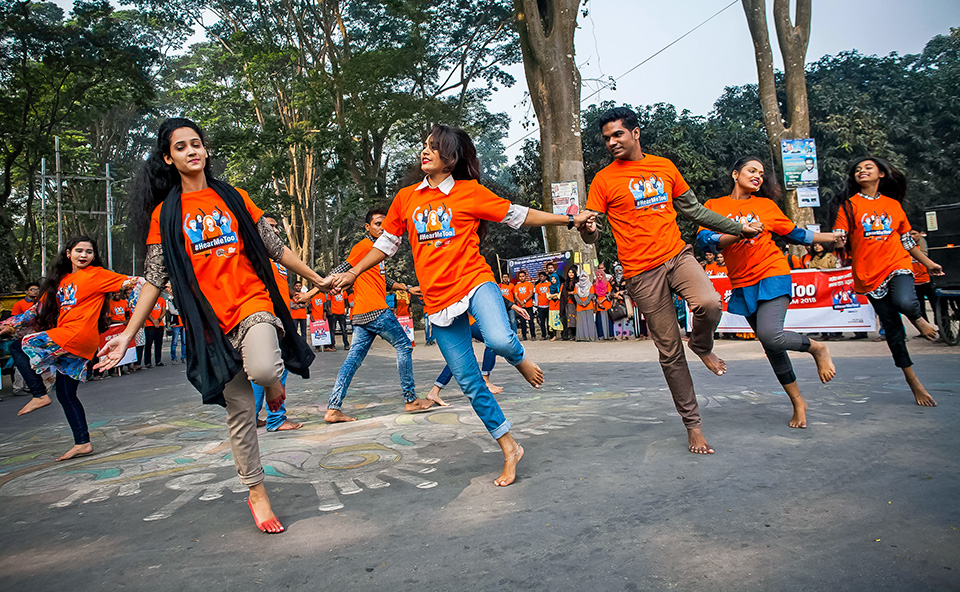
Students participating in a flash mob dance during student activation in Rajshahi Universityfor 16 Days of Activism, 4 December 2018, Rajshahi, Bangladesh. Photo: Fahad Kaizer
The issue
Violence against women and girls is one of the most systematic, widespread human rights violation worldwide. Violenceagainst women is a global pandemic, embedded in unequal power dynamics between women and men that is reinforced byharmful social norms or inequality under the law.
In Bangladesh, despite the progress made so far in terms of the normative and policy framework, the incidence ofviolence against women and girls is still very high:
- One in five adolescent girls between the age of 15 to 19 reported experiencing partner sexual violence[1];
- More than 80 per cent of currently married women are abused at least once during their marriage, most often from someone they know and should trust[2];
- More than one in four women experience sexual or physical violence[3];
- 76 per cent female students in higher education institutions faced sexual harassment in their education campus[4];
- Seven out of ten women (73 per cent) have experienced domestic violence at least once in their life[5];
- Only 2.6 per cent of women took legal action for partner physical or sexual violence[6].
Over the last few decades, the Country adopted laws and policies meant to promote gender equality and addressviolence against women and girls, such as theWomen's Development Policy, followed by theNational Action Plan in 2011, the 2009 High Court'sDirective on sexual harassment, theWomen and Child Repression Suppression Act, and DomesticViolence (Prevention and Protection) Act. Furthermore, the National Action Plan on violence against womenand children was revised and launched in November 2018.
Despite this progress, violence against women and girls is still rampant. The normative system needs to bestrengthened and implemented; there is a strong need for capacity building of institutions, coupled with educationand awareness of the drivers, types and consequences of violence against women and girls. Cooperation between the state and non-state actors, both in policy making and in-service provision, in response to violence, needs to beimproved with the aim to eliminate violence against women and to increase access of survivors to the appropriatejudiciary and other services.
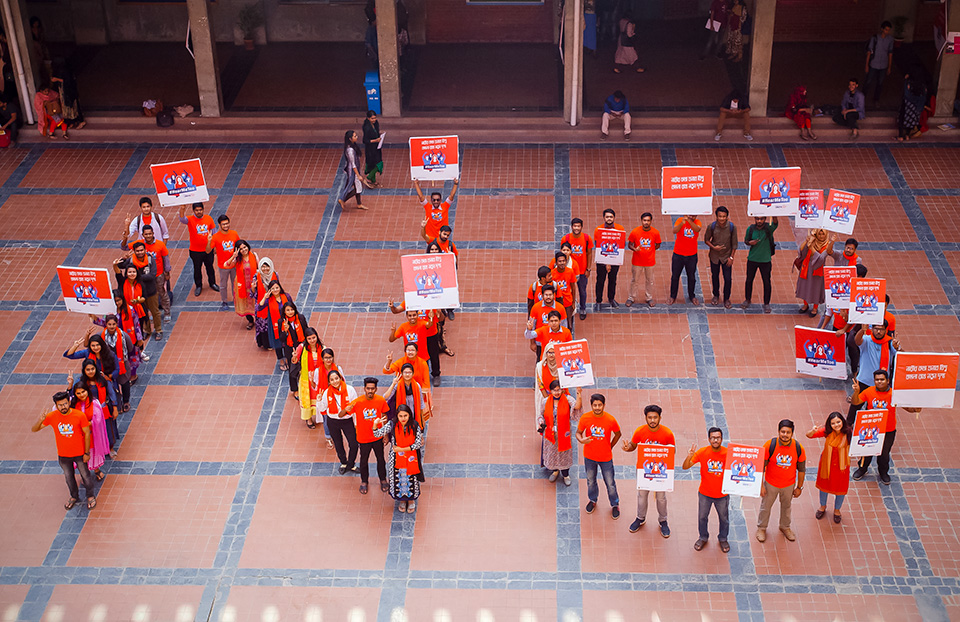
Student Campaign Group in East West University showing their commitment to end violence for 16Days of Activism, 3 Dec 2018, Dhaka, Bangladesh. Photo: Fahad Kaizer
How we are making a difference?
UN Woman’s work on ending violence against women intends to look at the key drivers of violence and addressthem with the final aim of preventing violence before it occurs.
The work on prevention aims at understanding and addressing the root causes, the risk and protective factorscontributing to violence with the final aim of transforming the believes, attitudes and behaviors that fuelviolence.
UN Women works with women and men at community level to promote behavior change by introducing alternative andtransformed social norms and a more equitable distribution of power and resources between women and men.
Coupled with this, we are working to strengthen the policy and legal framework. We work with private and publicinstitutions to ensure measures to prevent violence against women are properly adopted and monitored so thatviolence is prevented at work and in tertiary education. We also work with civil society organization andwomen’s movements to strengthen women’s voice and agency to make duty bearers accountable to ensureimplementation of violence related laws and policies.
Engaging with youth, especially university and college students to raise awareness and prevent violence in campusesand increase the capacity of university staff to address sexual harassment is also key strategy in this work.
While focusing on prevention and protection, our strategies are anchored in the understanding and vision thatintervention are not to be implemented in isolation but rather though a participatory and multi-faceted approach,where women and girls are at the centre of every decision.
- Hidden in Plain Sight, UNICEF, 2014.
- National VAWG Survey, 2015.
- National VAWG Survey, 2015.
- UN Women Situation Analysis 2013.
- National VAWG Survey, 2015.
- National VAWG Survey, 2015.


![[cover]](/sites/default/files/2023-09/bd-bogra-chamber-of-commerce_brief-1679px.jpg?t=1694594676)
![[cover]](/sites/default/files/2023-09/bd-brief_gahc-research-report-1679px.jpg?t=1694595353)
![[cover]](/sites/default/files/2023-09/bd-implementing-a-complex-gbv-ptrevention-progra-1679px.jpg?t=1694494788)
![[cover]](/sites/default/files/2023-09/ap-pactice-based-learning-from-sasa-together-1679px.jpg?t=1694503475)
![[cover]](/sites/default/files/2023-09/bd-16ways-against-rape-cultur-1679px.jpg?t=1694590792)

